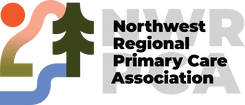|
By Katharine Rossitch, DDS & Mai Jackson Oral health in elementary-aged children is a critical issue in Washington State, with statistics revealing a pressing need for improved dental care among young students. It is important to rethink access to oral health services so children and families can be met where they are. School based oral health programs (SBOHPs) provide a unique twist on the conventional dental experience. While each program is different, they all have a mutual goal to bring dental care focused on prevention to the place where kids often spend the most time outside of home and feel the most comfortable. They can often be the first step towards connecting students to a dental home within their community since these programs provide referrals for comprehensive care. Washington Dental Service (WDS), the parent company to Delta Dental of Washington and the Arcora Foundation, has created a School-Based Oral Health Program Learning Collaborative, a 24-month initiative designed to enhance oral health outcomes for elementary-aged children in Washington. The necessity of such an initiative becomes clear when considering the current state of oral health among Washington's youth. According to Smile Survey data from 2016, 38% of children entering kindergarten in Washington have experienced decay, and this number rises to 53% by the third grade. More troubling is the disparity in these figures when considering socio-economic status and race/ethnicity, with significantly higher rates of decay in children from low-income households and children of color. The SBOHP Learning Collaborative aims to bring together like-minded individuals to learn together and from each other. The key objectives are increasing utilization rates, reducing untreated tooth decay rates, and applying evidence-based dentistry to provide timely, preventive treatment. WDS will provide data collection, quality improvement practices, design thinking, and resources in the form of expert speakers, facilitators, and research. The Collaborative intends to focus on preventive measures, early detection, and timely treatment to ensure optimal oral health among school-aged children. This approach is not only about immediate care but also about instilling lifelong healthy habits. Moreover, the Collaborative embraces a model where 'all teach, all learn' is the guiding principle. This approach fosters an environment of collective problem-solving and innovation. Participating programs from around the state will regularly share knowledge and experiences, creating a rich pool of insights and strategies. The culmination of this collaborative effort will be a comprehensive playbook, compiling best practices, solutions, and lessons learned. This resource aims to empower stakeholders with proven strategies to enhance their programs and contribute to broader oral health improvements. The Collaborative was inspired by the cost-effective, evidence-based, minimally invasive “CariedAway” model of care that was developed by Dr. Richard Niederman. The program focuses on the use of silver diamine fluoride and glass ionomer, which provides a drill free, pain free alternative to traditional dental treatment. Niederman’s studies demonstrate a significant reduction in untreated decay within a school setting. Such successful models provide a blueprint for SBOHPs in Washington State to follow. The vision of the Collaborative aligns with the long-term goal set by WDS: ensuring every Washingtonian can achieve a healthy mouth by 2035. By focusing on school-based programs, this initiative recognizes the vital role schools play in children's health. Through increased participation, focused preventive measures, and the sharing of best practices, the Collaborative sets a course for significant improvements in oral health for Washington's youth. This endeavor is not just about dental care; it's about shaping a healthier, more equitable future for all children in Washington State. Comments are closed.
|
Archives
June 2024
Categories |
|
|
© Northwest Regional Primary Care Association. All Rights Reserved.
This project is supported by the Health Resources and Services Administration (HRSA) of the U.S. Department of Health and Human Services (HHS) as part of an award totaling $1,742,242.00 with 25% financed with nongovernmental sources. The contents are those of the author(s) and do not necessarily represent the official views of, nor an endorsement, by HRSA, HHS or the U.S. Government.




 RSS Feed
RSS Feed
